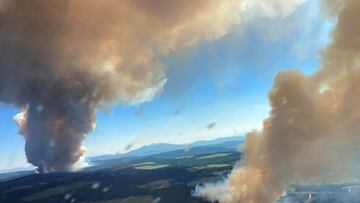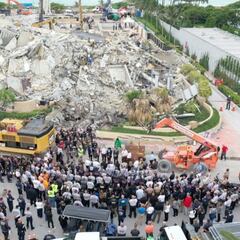California Wildfires: U.S. Forest Service predicts that the situation will worsen
Historic heatwaves and raging wildfires have set the stage for a dangerous 2021 fire season. What areas has the US Forest Service predicted will be most impacted?


This past weekend, much of the West experienced record-breaking temperatures. In June, heatwaves across the Pacific Northwest broke records in cities like Portland, Oregon, known for their mild climate. With thermometers reading over 116 degrees, residents suffered as the city's temperatures typically stands around 75 degrees in early summer.
In addition to heatwaves, California and other surrounding states have suffered from long and devastating fire seasons in recent years. Year after year, large fires, like the Camp Fire, which leveled the Northern California town of Paradise, are becoming a threat to more people and their communities.
Conditions are not expected to improve this year. On 1 July, the US Forest Service released its “National Significant Wildland Fire Potential Outlook,” which predicted that the West is at increased fire risk. This increase is driven partly by the fact that ninety percent of the area is experiencing drought conditions.
With 300 fires burning in British Columbia, 24 in California, 14 in Idaho, 13 in Oregon, and four in Washington, it’s safe to say wildfire season is here. https://t.co/D1QIr5IfjC
— The Seattle Times (@seattletimes) July 12, 2021
With much of California predicted to experience a hotter summer, “Above normal significant fire potential is expected across much” Northern California through August and in Southern California from July to September.
The deserts and the San Joaquin Valley, which covers most of the interior part of the state, where the majority of agricultural production takes place, are predicted to have a “near normal significant fire potential.
Why are the fires getting worse?
While wildfires have long been a part of California history, but fire seasons in recent years have many residents questioning whether they are safe.
One way to mitigate larger fires is to burn smaller areas in a controlled way. This forest management tool prevents larger fires from burning through areas quickly, as the kindling it would use to gain power has already burned.
Many forestry experts state that the current crisis is related to failed policy choices made at the turn of the twentieth century. As more and more people moved West, the state government began to suppress wildfires, which Susie Kocher, a University of California forestry advisor, said has led to “a huge buildup of fuels and debris.”
A study published by UC Berkley showed that in the 1800s, around “some 4.5 million acres or more” would burn each year. With many communities establishing themselves in rural, fire-prone areas throughout the late 1800s and twentieth century, this scale of burning would be catastrophic. For reference, in 2020, 1.4 million acres burned, and the Director and Fire Chief of California described the season as “arguably, the worst fire year ever experienced on the west coast, and specifically in California.”
How much land has burned already?
According to Cal Fire, by 11 July 2020, almost 33,000 acres had burned as a result of 3,645 fires. This year, the state has reported more fires, 4,163, but overall less area, 18,771, has burned.
It is one of more than 4,500 wildfires that have broken out in California in 2021 alone — more than 700 fires than the historic 2020 California wildfire season had experienced in the same span.
— NowThis (@nowthisnews) July 9, 2021
Related stories
However, numbers will soon rise because the Beckwourth Complex fire has burned more than 86,000 acres and is only nine percent contained. The Beckwourth fire increased in strength quickly because it is the combination of two individual fires that merged.
More than 1,200 firefighters are combating the blaze. Officials had published evacuation orders early last week that were lifted for more than 3,000 residents Saturday. Those in the area were told that they could be asked to evacuate again if the fire could not be contained and shifts course.

